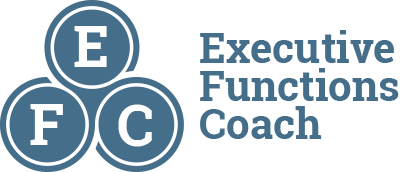Attention Deficit Help: Empowering Students to Excel Academically
Attention deficit help, particularly childhood attention deficit hyperactivity disorder (ADHD), can be challenging, especially if it is predominantly inattentive. This form of ADHD often leaves children feeling inadequate, wondering why their hard work isn’t yielding the expected results. For instance, my client, Becky, struggled with attention deficit disorder in children from a young age. Despite her efforts, she constantly questioned why she couldn’t keep up with her peers, leading to frustration and self-doubt. Her parents would try their best to empathize and provide the right structure for her. However, without a lot of accountability on both sides, Becky’s parents realized they needed more specialized help with attention deficit disorder. Through personalized attention deficit help strategies, Becky learned to manage her symptoms and improve her academic performance.
The Importance of Understanding Attention Deficit Disorder in Children
A key aspect of providing attention deficit help is ensuring that both the student and their support system have a clear understanding of the diagnosis. For students like Becky, this knowledge can reduce anxiety and prepare them to tackle challenges head-on. When Becky was diagnosed with childhood attention deficit hyperactivity disorder in 5th grade, neither she nor her mother fully understood what it meant. This lack of understanding led to unrealistic expectations and tension at home. However, once EFC began to provide Becky’s family with help with attention deficit disorder, Becky’s symptoms got better. We focused on setting realistic goals and using tools that freed up Becky’s brain space, significantly reducing her stress levels. The right understanding of both Becky and her support system allowed the attention deficit help we provided to have real tangible results.
Becky’s Journey: Effective Strategies for Attention Deficit Help
One of the most effective strategies for managing childhood attention deficit hyperactivity disorder is breaking tasks into smaller, manageable chunks. For Becky, we found that tasks within the 20-25 minute range worked best, though this can vary based on factors like fatigue, environmental distractions, and task difficulty. We chose to focus on task-based goals rather than time-based ones and saw significant help with attention deficit disorder for Becky. It gave her a sense of accomplishment with each completed task and reduced lingering feelings of stress from unfinished goals. This way of approaching assignments is a great habit to establish for attention deficit disorder in children.
Other Key Strategies for Helping Childhood Attention Deficit Hyperactivity Disorders
- Chunking Tasks by Activity: An essential part of attention deficit help is breaking down larger assignments into smaller tasks that can be completed in 20-25 minutes. For Becky, thinking in terms of tasks rather than time helped her focus better and feel more accomplished. For instance, when faced with a large history project, Becky learned to break it down into smaller parts, starting with the most challenging aspect—choosing a topic. By tackling this first with help from mom, she found that the rest of the project took less time than she had anticipated. Finding the right moments for parental support is crucial for attention deficit disorder in children.
- Structured Breaks to Prevent Procrastination: Structured breaks are another critical component of managing childhood attention deficit hyperactivity disorder. These breaks should be between 5-10 minutes and focused on specific activities. The goal of this is to help students like Becky reset their focus and return to their tasks with renewed energy. This attention deficit helps prevents the procrastination that often accompanies feelings of being overwhelmed by large tasks.
- Time Sensing and Task Planning: Time sensing—the ability to estimate how long a task should take—is an important skill that helps with attention deficit disorder. Initially, Becky struggled with this, often underestimating the time required for assignments. However, through consistent practice and planning, she developed a better sense of how long tasks would take. This strategy for attention deficit disorder in children allowed her to allocate her time more effectively and reduce stress.
- Using Planning Tools: Tools like to-do lists and calendars play a significant role in providing help with attention deficit disorder. When Becky broke down assignments into smaller parts and tracked her progress, she was able to stay focused on one task at a time. This approach not only helped her manage her ADHD symptoms but also improved her overall academic performance.
The Role of an Executive Functions Coach in Supporting Students
Becky’s journey highlights the importance of having a coach who understands the unique challenges of childhood attention deficit hyperactivity disorder. An executive functions coach provides tailored attention deficit help, ensuring that students and their families set realistic expectations and use effective strategies consistently. In Becky’s case, having this support made a significant difference in her ability to manage her symptoms and succeed both academically and relationally with her family.
Unlocking Academic Success: Take the First Step Today
If you or someone you know is seeking attention deficit help, particularly for managing childhood attention deficit hyperactivity disorder, consider reaching out for support. With the right strategies and guidance, students can overcome these challenges and achieve academic success. Schedule a consultation today to learn how an executive functions coach can help empower students to excel.


